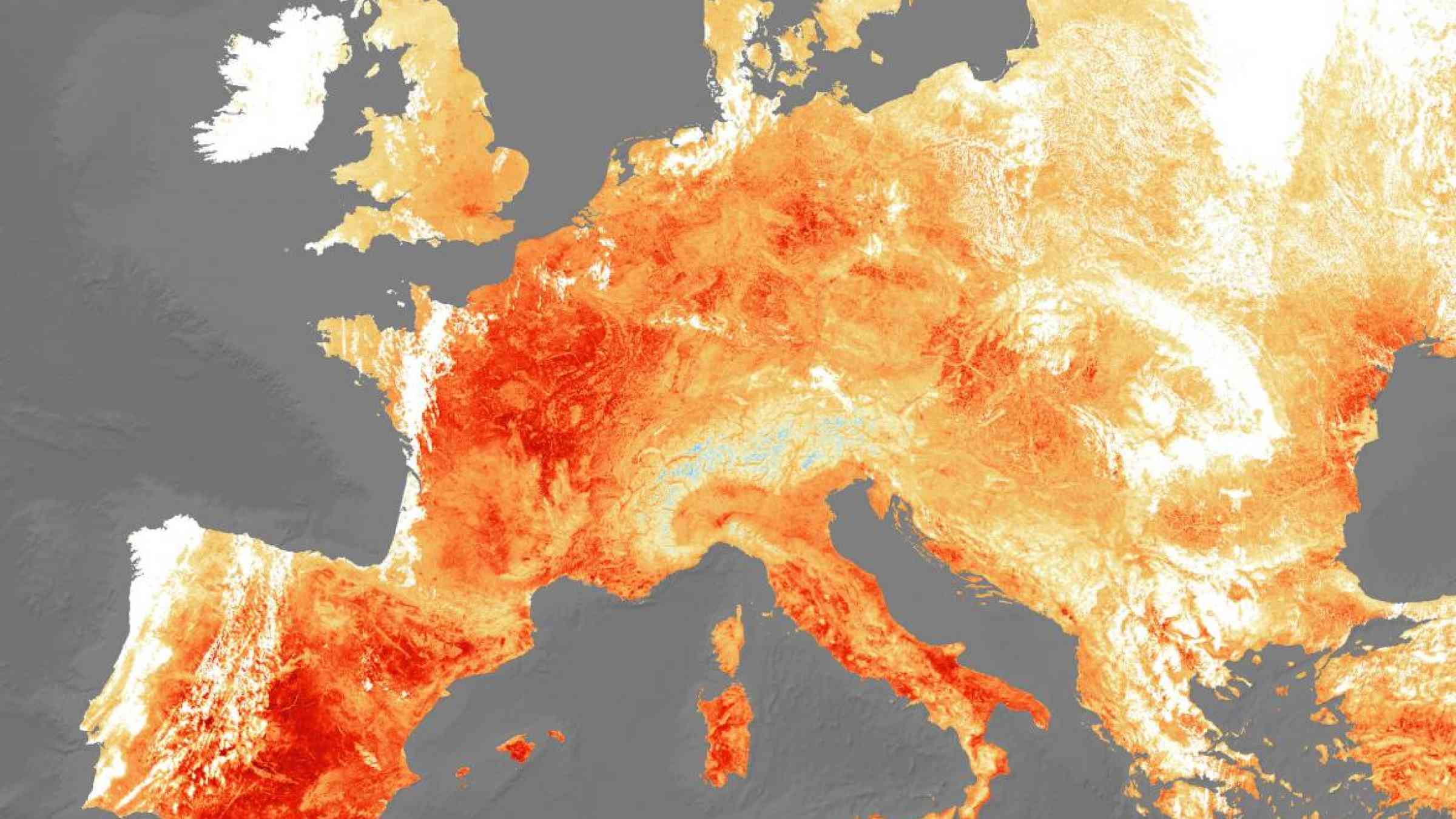Please help us improve PreventionWeb by taking this brief survey. Your input will allow us to better serve the needs of the DRR community.
Naming and ranking heatwave to highlight invisible threat

The naming and ranking heat waves will convey the true nature of the threat heat poses. European Space Agency, CC BY-SA 2.0
WASHINGTON, D.C. – Today, the Atlantic Council’s Adrienne Arsht-Rockefeller Foundation Resilience Center, along with 30 global partners, announced the formation of the Extreme Heat Resilience Alliance (EHRA). Bringing together global cities’ leaders, experts in public health, finance, humanitarian assistance, disaster management, climate science and risk, insurance and public infrastructure, this Alliance rallies critical capabilities and networks to tackle the growing threat of extreme urban heat for vulnerable people worldwide.
“This extreme heat crisis can no longer be the ‘silent killer’ it is,” said Kathy Baughman McLeod, Director and SVP of the Adrienne Arsht-Rockefeller Foundation Resilience Center. “This growing risk – and related solutions – must be blasted from a megaphone to decision makers and to people everywhere made even more vulnerable by the impacts of COVID-19. With the power and reach of the Extreme Heat Resilience Alliance, priority one is to build a standard practice of naming and ranking heat waves globally, just as we do with tropical storms, so that communities and people can adequately prepare, and lives can be saved.”
Heat waves are one of the biggest climate-related threats to human health but rarely command the same attention as more visibly devastating disasters such as tropical storms or hurricanes. In the U.S., heat waves occur roughly six times a year, up from just two in the 1960s, and kill more people than hurricane- and flood-related deaths combined. In the past two decades they have claimed tens of thousands of American lives.
By mid-century, heat waves are expected to affect more than 3.5 billion people globally – 1.6 billion people in urban centers – as they grow in frequency, duration and intensity. As temperatures rise, the urban poor will likely remain susceptible, suffering from a combination of medical conditions (e.g., cardiovascular or respiratory diseases) that are exacerbated by heat, an inadequate awareness of heat risks, and insufficient means to mitigate (e.g., costs of cooling measures such as air conditioning) the effects of high heat.
Global death rate from rising temperatures projected to surpass the current death rate of all infectious diseases combined by the end of the century https://t.co/WPbDL5OODu @impact_lab
— PreventionWeb (@PreventionWeb) August 5, 2020
California Insurance Commissioner Ricardo Lara joined the Alliance in recognition of the impact of extreme heat on the health and long-term sustainability of local communities.
“Naming heat waves as a global threat is the first step to being able to mitigate the risk to vulnerable communities. We know that extreme heat harms those who have the least power to protect themselves and has long term ripple effects on our health and economy. Recognizing the impact of heat storms can galvanize global risk players to take action”, he said.
California’s Climate Insurance working group, which Commissioner Lara launched in 2019, has been focusing its efforts on extreme heat and other climate events as a major source of insurance risk.
Beyond the paramount threat to human life, economic and financial losses are substantive. According to the International Labour Organization, costs of lower labor productivity due to rising temperatures is expected to reach up to $160 billion in lost wages annually in the U.S. by 2090. Globally, GDP losses from heat are projected at greater than 20 percent by century’s end and temperatures could rise to the point that spending a few hours outside in some places could be fatal for even “the fittest of humans”.
EHRA is in active conversations with the National Oceanic and Atmospheric Administration (NOAA), World Meteorological Organization (WMO) and other institutions on regional and international scaling. The Alliance will also work to build and operationalize the international cooperation needed to make naming and ranking of heat waves standard practice.
EHRA is also addressing the short and long-term shocks and stresses from extreme heat, with a focus on vulnerable communities, by: educating decision makers and key stakeholders about the risks and impacts of extreme heat and how to reduce them; developing policy recommendations to reduce heat risk; providing better access to affordable capital for long-term interventions, such as building physical and financial resilience to heat, including creation of extreme heat-risk transfer insurance solutions; and implementing effective, on-the-ground heat-reduction interventions that build the evidence base.
“The naming and ranking heat waves all over the world by the Extreme Heat Resilience Alliance will, for the first time, convey the true nature of the threat heat poses, essential to protecting vulnerable people who are increasingly more susceptible to its harmful effects," said President of the Rockefeller Foundation, Dr. Rajiv Shah. "The work helps The Rockefeller Foundation achieve our goal – promoting the well-being and potential of all people."
A heat wave is defined by the National Weather Service as a period of abnormally and uncomfortably hot and unusually humid weather that typically lasts two or more days. The World Health Organization defines it in human-health terms: as prolonged periods of excessive heat that results in dehydration, heat stroke, heart kidney failure, and a host of heat-related illnesses that can lead to mortality.
Currently, 30 percent of the world copes with deadly heat waves lasting 20 days or longer. Projections suggest heat waves will impact 75 percent of the planet’s inhabitants by 2100 if preventive measures are not implemented to mitigate their effects.
Explore further
Please note: Content is displayed as last posted by a PreventionWeb community member or editor. The views expressed therein are not necessarily those of UNDRR, PreventionWeb, or its sponsors. See our terms of use
Is this page useful?
Yes No Report an issue on this pageThank you. If you have 2 minutes, we would benefit from additional feedback (link opens in a new window).